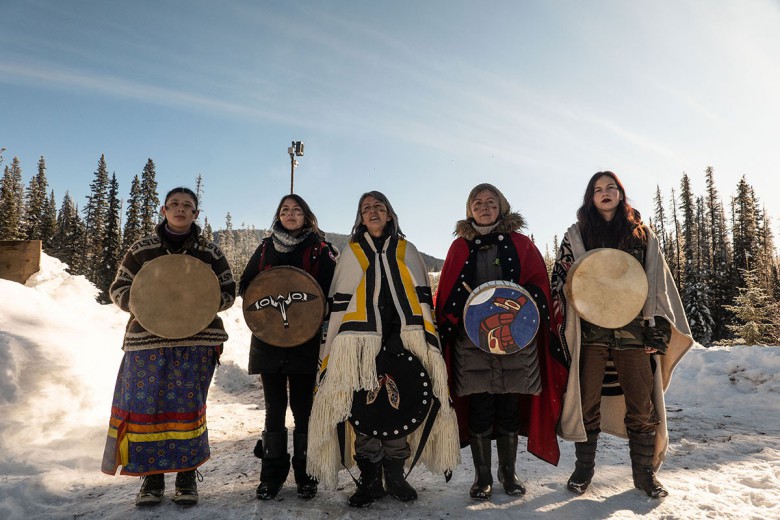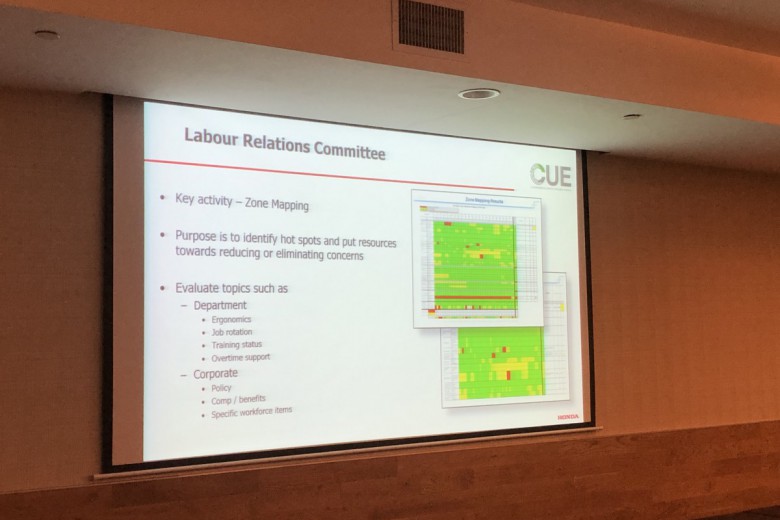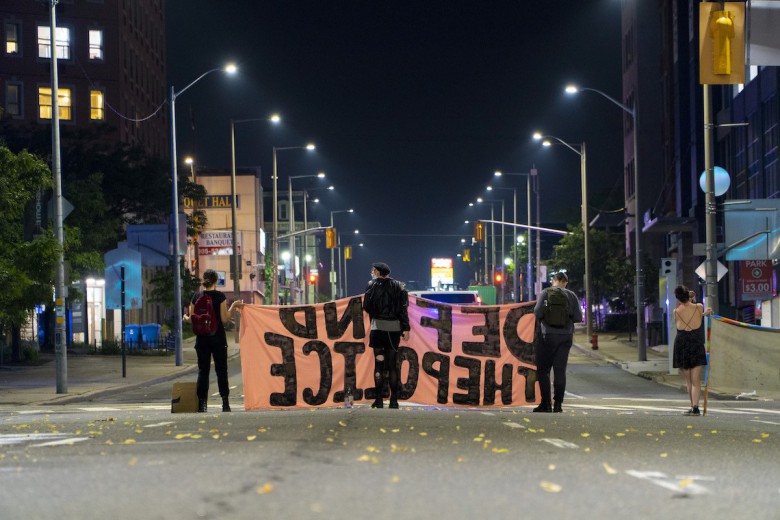In the early fall of 2016, a coalition of doctors in Saskatchewan called a public health emergency over an AIDS crisis. They were referring to the staggering HIV infection rate in Saskatchewan, which, at almost 14 people per 100,000, is nearly double the national average of 7.8 people per 100,000. The doctors say Indigenous people are particularly at risk, with an infection rate of 64 per 100,000 on reserves in Saskatchewan. But the Indigenous AIDS crisis is not restricted to that province. The Public Health Agency of Canada (PHAC) reports that 80,469 cases of HIV have been reported between 1985, when the agency first began collecting data, and 2014, the most recent year available. Since 2008, the number of reported HIV cases each year has gradually declined, and in 2014, 2,044 cases of HIV were reported. In 2014, working with ethnicity data for 58 per cent of the cases reported that year, Aboriginal peoples (in the language of the federal government) made up 16 per cent of HIV cases reported, a stunning number given that First Nations, Inuit, and Métis represent only 4.3 per cent of Canada’s total population as of 2011 statistics. Among those who reported injection drug use (IDU) exposure, a staggering 51 per cent reported being Aboriginal.
Where medical narratives place Indigenous people “at risk of” or “vulnerable” to HIV/AIDS, I am reminded of a conversation I had with someone on the National Indigenous Youth Council on Sexual Health and HIV/AIDS at the Canadian Aboriginal AIDS Network (CAAN). Indigenous girls, trans youth, and gender-nonconforming youth aren’t at risk, they said – the world is risky for them. HIV prevalence within Indigenous communities is part of a legacy of colonialism that impacts our bodies. Jessica Danforth, former executive director of the Native Youth Sexual Health Network, said at a conference: “I hate that we portray Indigenous youth as ‘at risk.’ At risk of what? Colonialism?” The staggering statistics never tell the whole story; it’s only by understanding how colonialism and white supremacy function to erase Indigenous people that we can engage with the Indigenous AIDS crisis.
HIV statistics ought to be subjected to healthy amounts of critical analysis. The information from the PHAC race/ethnicity and exposure category from 1998 to 2014 is available for only 41 per cent of those who reported. While PHAC is a federally mandated agency, its collection and management of statistics varies by province. Quebec, for instance, doesn’t collect or submit ethnicity data to PHAC, and prior to 2009, neither did Ontario (and in Ontario, ethnicity data for AIDS cases is unavailable after 2004). Manitoba does not provide disaggregated data on Aboriginal peoples. But above all, HIV statistics must be understood to represent people. The 2010 CAAN strategy for Indigenous women in Canada, Environments of Nurturing Safety, reinforces this: “These numbers represent our sisters, daughters, aunties, nieces, cousins, mothers, granddaughters and grandmothers.”
Still, it is important to engage with the available statistics in order to better understand how the crisis uniquely affects Indigenous women and two-spirited people. Between 2009 and 2014, PHAC reported that Indigenous women represented 40 per cent of HIV cases reported among all women. Indigenous women who are injection drug users are twice as likely as their Indigenous male counterparts to be HIV positive. Environments of Nurturing Safety has noted that Indigenous women account for nearly half of all cumulative HIV infections, and they represent the highest proportion of HIV infection due to IDU. Indigenous women report feeling fearful of stigma and discrimination, both from institutional care providers as well as within their own communities, and this negatively affects their participation in HIV/AIDS testing and accessing antiretroviral therapy. Significant barriers to accessing health services and social support, from distrust of colonial institutions to fear of stigmatization, have resulted in a high incidence of AIDS-related illnesses, low CD4 (T helper cell) counts, impaired immune systems, and high rates of mortality among HIV-positive Indigenous women.
Statistics on HIV in Canada do not include trans, gender-nonconforming, and two-spirited people because testing clinics that report their data to PHAC collect only binary gender information, so clients are forced to place themselves in one of two gender categories. Including two-spirited youth in the analysis of HIV means recognizing that two-spirited youth often migrate from their home communities to cities to escape homophobia, stigmatization, and discrimination. Once in the city, they are often overrepresented in street economies and can experience difficulty finding appropriate housing, a lack of social supports, low-income status, and a deterioration of their mental and physical health, including HIV exposure and the onset of AIDS symptoms.
The grave statistics are met with distressing institutional responses. While Indigenous people were marked as a key population for PHAC funding through the national HIV and Hepatitis C Community Action Fund, organizations like the Black Indigenous Harm Reduction Alliance in Montreal were denied funding in the 2016 cuts to programming. The future of CAAN is also uncertain, having had 70 per cent of its budget slashed. The Native Women’s Association of Canada, which is not a community-based HIV organization and has been critiqued for its platform on sex workers that carries implications for their increased HIV exposure, has received funding. While PHAC allocated funding to three national Indigenous-centric organizations and to at least 16 diverse, province-specific Indigenous organizations in order to address HIV levels in various communities, what happens when organizations integral to Indigenous AIDS responses like CAAN don’t have stable funding? Where can Indigenous communities find accessible, localized services that are specific to their needs? Without funding for HIV/AIDS services for Indigenous people, can we hold out hope that community organizations will do this work, or are we facing a public health emergency that erases Indigenous women and two-spirited people? Institutional erasure – within government, research, and community organizing – of Indigenous women and two-spirited people compounds the funding cuts to systemically entrench inadequate responses, putting these communities at an increased long-term risk.
Existing institutional and knowledge production in a colonial society will never yield the radical grassroots HIV organizing that is so essential for the health of Indigenous women and two-spirited peoples. This article calls for an intervention into the white-settler queer and trans HIV organizing methods that contribute to the colonial erasure of Indigenous bodies. HIV organizers and researchers must consistently resist colonial responses to AIDS that have failed HIV-positive Indigenous women and two-spirited folks, who are disproportionately affected by HIV in Canada.
Rendered invisible
While I was collecting oral histories of Indigenous HIV/AIDS organizing, an Elder shared with me how HIV-positive Indigenous women have been organizing in the HIV movement from the beginning. However, mainstream HIV researchers and organizers don’t often hear these histories, and many haven’t spent time with Indigenous communities to see their responses to HIV/AIDS. This erasure of Indigenous woman and two-spirited people within HIV movements is multi-faceted, and maintained by research and by government programming.
Many HIV community organizers have argued that the problem with HIV responses is their top-down hierarchies and homogenization, citing the location of this error within the government’s management and allocation of HIV funding, and calling for community-defined HIV strategies. While such analysis correctly attributes some of the failures to a capitalist health-care system, the arguments also need an anti-colonial analysis. Indigenous women and two-spirited folks are often homogenized in HIV organizing and research as intravenous drug users, resulting in community responses to HIV that fail to address colonial processes and further compound the AIDS crisis in Indigenous communities. Factors like misogyny, an insistence on white subjectivity, and the dominant ways in which the HIV movement is historicized each contribute to this erasure.
Dominant subjectivities
Misogyny and white fragility among gay men is nothing new, but it does result in the erasure of Indigenous women and two-spirited people from HIV movements. Writer Seán Faye explains that, while it’s true that gay men have been oppressed within Euro-American Judeo-Christian society, we can find a “class-inflected” dominance among communities of gay white men, “an ideal of social bonding and advancement realisable only for wealthy and educated men.” By 1973, explains Faye, the Gay Liberation Front (GLF), a group that held the first London Pride march, was fracturing around misogyny and gender. A 1976 article in the socialist journal Gay Left describes it: “The male gay movement, instead of challenging and confronting sexism, became increasingly defensive.” We see these attitudes of defensiveness within HIV organizing as well, where white cis men tend to flatten issues of race and gender and see them as divisive.
In his book Spaces Between Us: Queer Settler Colonialism and Indigenous Decolonization, Scott Lauria Morgensen discusses how settler colonialism manifests within contemporary LGBTQ communities, despite gender and sexual diversity. Dominant queer and transgender communities often reproduce settler colonialism and settler subjects, which continues settler-colonial relationships between (queer and transgender) white settlers and Indigenous peoples. Just as white liberal feminists clustered feminist histories into waves that focused on gaining legal rights, so has white liberal HIV theory bracketed HIV/AIDS histories around white-led organizing. For instance, Ted Kerr has cited Black, Indigenous, and people of colour’s (BIPOC) perspectives and realities as the newly emerging second wave of HIV histories, following the so-called first wave of HIV activism, which started with white cis gay men. This arguably absolves white cisgender men from taking responsibility for upholding colonial and white supremacist hierarchies within HIV/AIDS organizing.
My own early education in HIV histories was centred in a white liberal framework, mirroring what feminist scholars often refer to as white liberal feminism – an individualistic feminist theory, frequently relying on the acquisition of legal rights like wage equity and reproductive rights to demonstrate equality status. Similarly, a common retelling of the HIV movement in the U.S. and Canada centres the organizing and subjectivities of white cisgender men. One such critical milestone is the work in the late 1980s and early 1990s of ACT UP (AIDS Coalition to Unleash Power), which campaigned for the U.S. Food and Drug Administration to release antiretroviral medication that had the potential of halting AIDS and AIDS-related illness. The access was life-saving for many, but legalizing access to antiretroviral therapy through the health system does not guarantee access to that therapy for all HIV-positive people; it improves access only for those individuals who can easily and readily navigate the system – and most often, those people are cisgender white men. Too frequently, Indigenous people experience financial and personal barriers to accessing therapy. But popular tellings of that milestone event don’t usually include that the achievement benefited only relatively few HIV-positive people.
Canadian HIV researchers’ over-identification with U.S. HIV organizing often leads them to be inattentive to the histories of Canadian HIV organizing within our own colonial borders, including the many communities that are present throughout the Canadian HIV movement and yet are absent in the retelling of these histories. When the dominant subjectivity of HIV is imagined to be white, male, cisgender, and Americanized, institutional responses in government policy and research follow suit.
Erasure in government and research
The ways in which governments erase Indigenous peoples are obvious, and these legislative failures bring HIV responses to an impasse. When Saskatchewan physicians called a state of emergency over HIV rates and recommended that the government direct resources to public education, universal screening, and support provision, the provincial government ignored the call, citing the fact that the Public Health Act does not allow the province to call a state of emergency. What’s more, since it expired in 2014, the province no longer has an HIV strategy. Tracing erasure among researchers and community organizers is trickier because many of them are not directly accountable to the public but still inform community responses to HIV in ways that privilege white cisgender men. In a talk at Concordia University entitled “Ending HIV/AIDS,” an epidemiologist and researcher with the B.C. Centre for Excellence in HIV/AIDS, Dr. M-J Milloy, discussed his research historicizing the HIV/AIDS outbreak of Vancouver’s Downtown Eastside without unpacking colonial factors: he didn’t describe the Indigenous communities of the Downtown Eastside, nor did he include an analysis of gender in populations there. He also failed to address how settler colonialism affects the lives of the Indigenous peoples in that community, and thereby their relationship to HIV status. When settler researchers like Milloy ignore colonial analysis, they cannot possibly produce research that addresses the ways in which HIV and AIDS specifically impact Indigenous communities.
Community organizing
In a workshop on HIV/AIDS organizing in 2014, I witnessed responses to HIV that were utterly devoid of an understanding of coloniality. One of the ideas raised in the workshop was to hold a flash performance with the message: “Don’t get tested.” The idea behind this slogan was that, if a person refuses to get tested and never knows their status, they won’t be criminalized for having HIV. But Indigenous people face almost insurmountable barriers in accessing testing, and they get tested later than non-Indigenous people, at times in the later stages of HIV. Groups like the Native Youth Sexual Health Network and organizers like Carrie Martin at the Native Women’s Shelter of Montreal have been working for years to make sure that Indigenous people resist stigma and get tested regularly.
The workshopped slogan completely undermined this work. Moreover, this action does little to address the fact that Indigenous people are continually criminalized, and this inherent criminality projected upon Indigenous bodies is much more complex than simplistic understandings of HIV culpability.
Reimagining Responses
Responses to AIDS in Canada need to be community-based and Indigenous-led. “‘One size fits all’ approaches to HIV/AIDS prevention that fail to consider the uneven conditions of risk across diverse populations have proven ineffective for increasing knowledge,” write Sarah Flicker et al. “By ‘culturally safe,’ we mean services that move ‘beyond the concept of cultural sensitivity to analyzing power imbalances, institutional discrimination, colonization and relationships with colonizers, as they apply to healthcare,’” they write, quoting the National Aboriginal Health Organization. Indigenous people need responses to HIV that are relevant and that acknowledge that they have long been erased in prevalent HIV programming. However, let’s take this as a call to reintroduce Indigenous people into HIV histories, to imagine responses that will meet Indigenous peoples where they are at – in the midst of an AIDS crisis. When we envision HIV futures, and the community-based responses we require, we must be as creative and dynamic as our communities themselves. We must do HIV research and organizing with an understanding that Indigenous women and two-spirited folks have unique and diverse needs in addressing the impacts of HIV/AIDS within their communities. We must endeavour to support those in our communities most affected by HIV and AIDS, instead of remaining complicit in Indigenous erasure and death.







